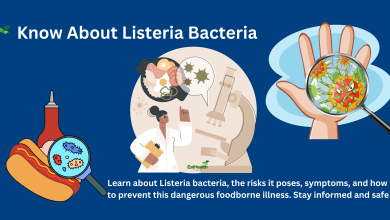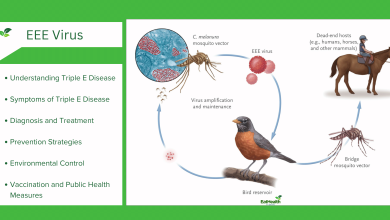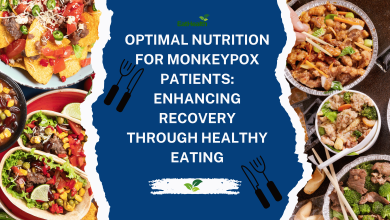Rotavirus Vaccine: Benefits and Risks
The Incredible Benefits of the Rotavirus Vaccine for Your Child

Rotavirus Vaccine: Benefits and Risks
Rotavirus is a leading cause of severe diarrhea and vomiting in infants and young children worldwide, often resulting in dehydration and hospitalization. The introduction of the rotavirus vaccine has been a significant advancement in public health, dramatically reducing the incidence of rotavirus-related illness and mortality. However, like any medical intervention, the rotavirus vaccine comes with its benefits and risks. This article delves into the various aspects of the rotavirus vaccine, providing a comprehensive understanding of its advantages and potential drawbacks.
Understanding Rotavirus
Rotavirus is a highly contagious virus that primarily affects infants and young children. It is the most common cause of severe gastroenteritis in this age group, characterized by symptoms such as severe diarrhea, vomiting, fever, and abdominal pain. The virus spreads through the fecal-oral route, often through contaminated hands, surfaces, food, or water. Before the introduction of the rotavirus vaccine, nearly every child in the world experienced at least one rotavirus infection by the age of five, leading to significant morbidity and mortality.
The Development of Rotavirus Vaccines
In response to the high burden of rotavirus disease, researchers developed vaccines to prevent rotavirus infections. The first rotavirus vaccine, RotaShield, was introduced in 1998 but was withdrawn from the market a year later due to an association with intussusception, a rare type of bowel obstruction. Subsequently, two new vaccines, Rotarix (RV1) and RotaTeq (RV5), were developed and approved in the mid-2000s after extensive clinical trials demonstrated their safety and efficacy. Just as we know What are The Names of Childhood Vaccinations?
Benefits of the Rotavirus Vaccine
- Reduction in Rotavirus-Related Illnesses: The most significant benefit of the rotavirus vaccine is its ability to prevent severe rotavirus-related illnesses. Vaccinated children experience fewer episodes of severe diarrhea and vomiting, reducing the need for medical intervention and hospitalization. This, in turn, decreases the burden on healthcare systems and reduces medical costs.
- Decrease in Mortality Rates: In countries with high rotavirus-related mortality rates, the introduction of the vaccine has led to a substantial decrease in deaths among infants and young children. The World Health Organization (WHO) estimates that rotavirus vaccines have the potential to prevent over 200,000 deaths annually in low- and middle-income countries.
- Herd Immunity: Widespread vaccination against rotavirus not only protects vaccinated individuals but also contributes to herd immunity. When a significant portion of the population is vaccinated, the spread of the virus is reduced, providing indirect protection to unvaccinated individuals, including those who are too young or medically unable to receive the vaccine.
- Reduction in Hospitalizations and Healthcare Costs: By preventing severe rotavirus infections, the vaccine reduces the number of hospitalizations and outpatient visits. This alleviates the financial burden on families and healthcare systems, allowing resources to be allocated to other pressing health needs.
- Improved Quality of Life: Preventing rotavirus infections improves the overall quality of life for children and their families. Parents can avoid the stress and inconvenience of caring for a sick child, and children can continue their normal activities without the interruption of illness.
Risks and Side Effects of the Rotavirus Vaccine
While the benefits of the rotavirus vaccine are substantial, it is important to consider the potential risks and side effects. Most side effects are mild and temporary, but serious adverse events, though rare, can occur.
- Mild Side Effects: The most common side effects of the rotavirus vaccine are mild and include irritability, mild diarrhea, and vomiting. These symptoms usually resolve on their own within a few days without the need for medical treatment.
- Intussusception: Intussusception is a rare but serious side effect associated with the rotavirus vaccine. It is a condition where a part of the intestine folds into another section, causing a blockage. The risk of intussusception is highest within the first week after the first dose of the vaccine. However, studies have shown that the overall risk is very low, and the benefits of vaccination far outweigh this risk.
- Allergic Reactions: As with any vaccine, there is a small risk of an allergic reaction to the rotavirus vaccine. Signs of a severe allergic reaction include difficulty breathing, swelling of the face and throat, and hives. Such reactions are extremely rare, and immediate medical attention can effectively manage them.
- Vaccine Shedding: In rare cases, vaccinated infants can shed the virus in their stool, potentially transmitting the virus to unvaccinated individuals through close contact. This is particularly a concern for immunocompromised individuals who may have close contact with recently vaccinated infants. Good hygiene practices, such as thorough handwashing after diaper changes, can mitigate this risk.
The Global Impact of Rotavirus Vaccination
The introduction of the rotavirus vaccine has had a profound impact on public health globally. Countries that have included the rotavirus vaccine in their national immunization programs have witnessed significant declines in rotavirus-related hospitalizations and deaths.
- High-Income Countries: In high-income countries, the rotavirus vaccine has led to dramatic reductions in hospitalizations and medical visits for rotavirus-related gastroenteritis. For example, in the United States, the introduction of the vaccine has resulted in a 90% decrease in rotavirus-related hospitalizations among children under five years old.
- Low- and Middle-Income Countries: The impact of the rotavirus vaccine is even more pronounced in low- and middle-income countries, where access to healthcare is limited, and rotavirus-related mortality rates are high. In these regions, the vaccine has saved thousands of lives and reduced the strain on healthcare systems.
- WHO Recommendations: The World Health Organization recommends the inclusion of the rotavirus vaccine in all national immunization programs. This endorsement is based on the overwhelming evidence of the vaccine’s safety, efficacy, and the substantial public health benefits it offers.
Addressing Vaccine Hesitancy
Despite the proven benefits of the rotavirus vaccine, vaccine hesitancy remains a challenge in some communities. Misinformation, cultural beliefs, and concerns about vaccine safety contribute to reluctance among parents to vaccinate their children. Addressing these concerns through education and transparent communication is crucial for improving vaccination rates.
- Public Education Campaigns: Governments and healthcare organizations should invest in public education campaigns to provide accurate information about the rotavirus vaccine. These campaigns can dispel myths, highlight the benefits of vaccination, and reassure parents about the safety of the vaccine.
- Engaging Healthcare Providers: Healthcare providers play a vital role in building trust with parents and caregivers. Training and equipping healthcare professionals to address concerns and answer questions about the rotavirus vaccine can help alleviate fears and encourage vaccination.
- Community Involvement: Engaging community leaders, religious leaders, and influencers in promoting vaccination can also be effective. These trusted figures can advocate for the benefits of the rotavirus vaccine and help address cultural or religious barriers to vaccination.
Future Directions and Research
Continued research and development are essential for optimizing the efficacy and safety of the rotavirus vaccine. Ongoing studies aim to develop new formulations, improve delivery methods, and expand the understanding of the vaccine’s long-term impact.
- New Vaccine Formulations: Researchers are exploring the development of new rotavirus vaccine formulations that are more stable and easier to administer. These advancements could improve vaccine coverage in remote and low-resource settings.
- Combination Vaccines: Combining the rotavirus vaccine with other routine childhood vaccines could simplify immunization schedules and improve overall vaccine uptake. Combination vaccines reduce the number of injections required, making the vaccination process more efficient and less distressing for children.
- Monitoring and Surveillance: Continuous monitoring and surveillance of rotavirus infections and vaccine-related adverse events are crucial. This data helps assess the long-term impact of the vaccine, identify potential issues, and guide future vaccination policies.
Conclusion
The rotavirus vaccine represents a significant achievement in public health, offering substantial benefits in reducing severe gastroenteritis, hospitalizations, and deaths among infants and young children. While the vaccine is associated with some risks, such as intussusception, the overall risk is very low, and the benefits far outweigh these concerns.
Through continued public education, engagement with healthcare providers, and ongoing research, the reach and impact of the rotavirus vaccine can be expanded, ultimately leading to better health outcomes for children worldwide. Adopting and advocating for rotavirus vaccination is a critical step towards ensuring a healthier and more resilient future for all.




